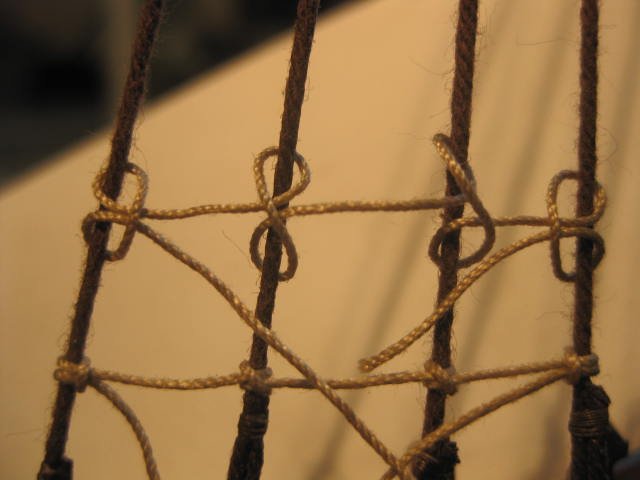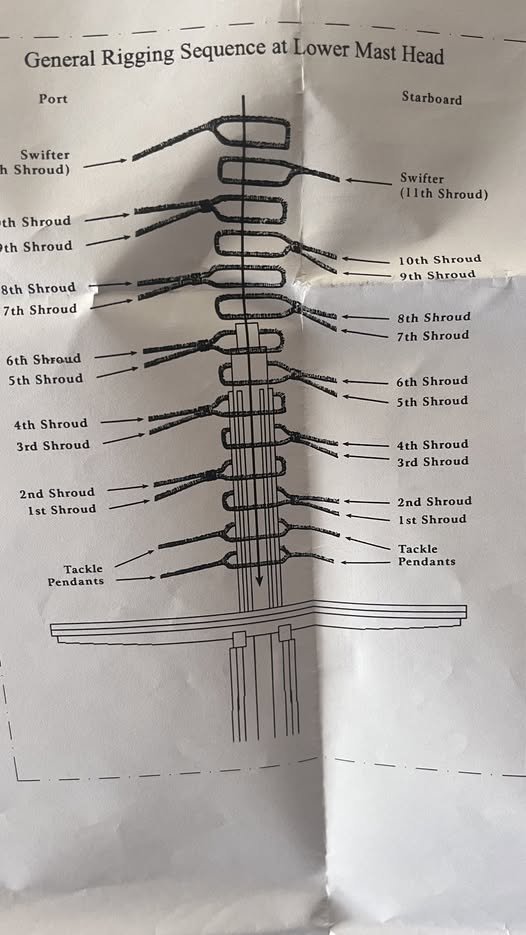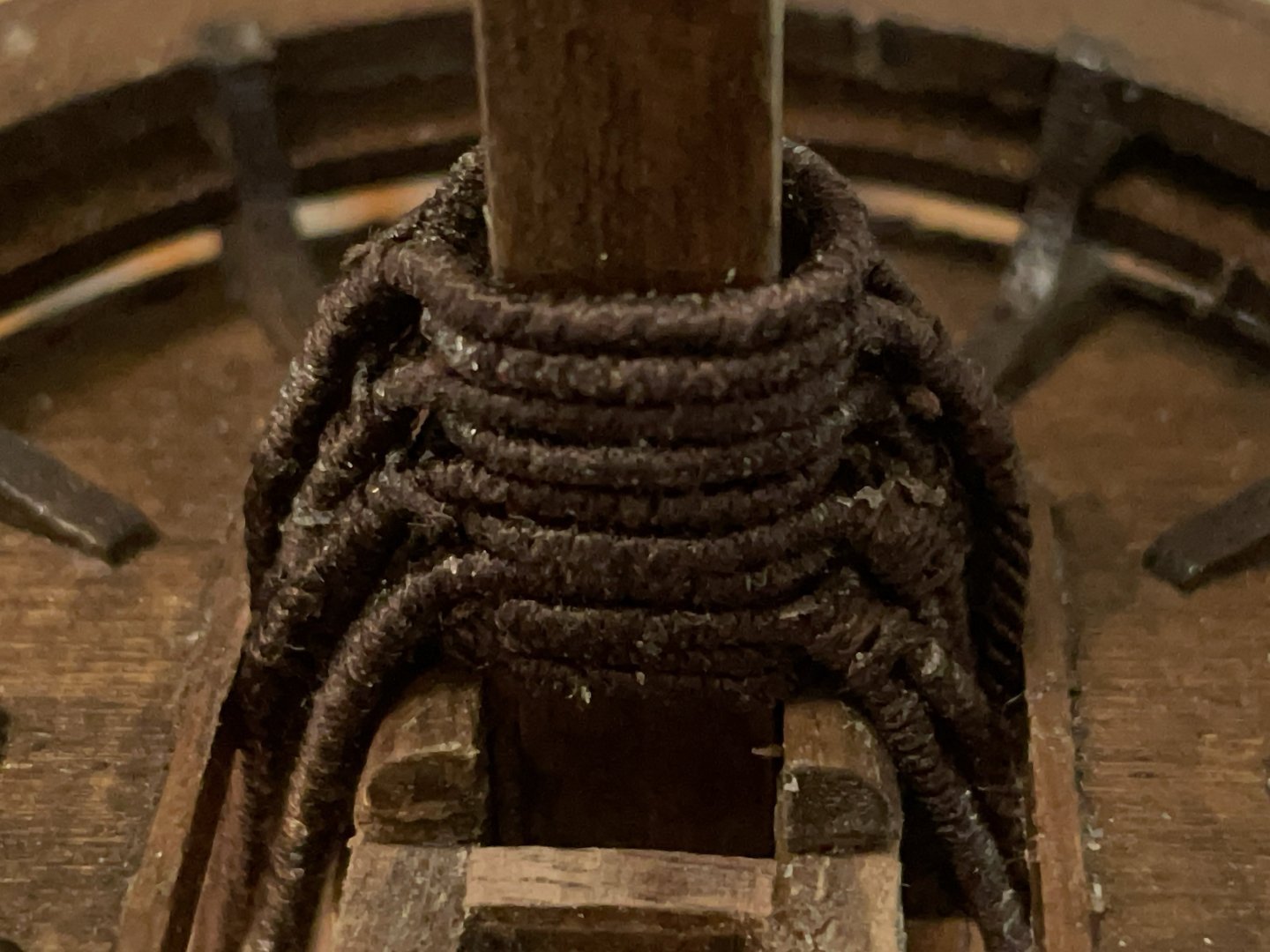-
Posts
282 -
Joined
-
Last visited
Recent Profile Visitors
The recent visitors block is disabled and is not being shown to other users.
-
 Loracs reacted to a post in a topic:
Shrouds and Ratlines
Loracs reacted to a post in a topic:
Shrouds and Ratlines
-
 Snug Harbor Johnny reacted to a post in a topic:
Shrouds and Ratlines
Snug Harbor Johnny reacted to a post in a topic:
Shrouds and Ratlines
-
 Loracs reacted to a post in a topic:
Shrouds and Ratlines
Loracs reacted to a post in a topic:
Shrouds and Ratlines
-
 davyboy reacted to a post in a topic:
Shrouds and Ratlines
davyboy reacted to a post in a topic:
Shrouds and Ratlines
-
 Knocklouder reacted to a post in a topic:
Shrouds and Ratlines
Knocklouder reacted to a post in a topic:
Shrouds and Ratlines
-
 barkeater reacted to a post in a topic:
Shrouds and Ratlines
barkeater reacted to a post in a topic:
Shrouds and Ratlines
-
 palmerit reacted to a post in a topic:
Shrouds and Ratlines
palmerit reacted to a post in a topic:
Shrouds and Ratlines
-
Loracs started following Bismarck by drobinson02199 - FINISHED - Amati - Scale 1:200 , Shrouds and Ratlines , Chris Watton and Vanguard Models news and updates Volume 2 and 6 others
-
Greeting, first off: nice model. It looks fantastic. You should be proud... will be a nice display piece. Personally, I would not bother using the jig for the shrouds/ratline. It looks easier, faster and more accurate... but it is not. Setting them up to the ship will be a nightmare. Most people DON"T recommend using this type of jig. I would rather set the shrouds one by one (will look better) directly on the ship and then make the ratlines. Watch video on how to set it up on the mats. There is a specific order for each shroud (in an alternating pattern), so it flow nicely from the mat to the deadeye. Here a link to a tutorial. Rigging is an integral part of modeling sail ship... can be fun to do properly. HEY! you will get another set of skills to your repertoire. (1) HOW TO START STANDING RIGGING CORRECT | Ships of Scale Note: picture is a close-up. The rope is ~1.5-2mm. The ratlines are far better done after you set the shrouds. I would do it the classical way, using clove hitch knots. At first it is intimidating... but soon it will go as a breeze. Remember after a dozen or so, you will get the hang of it. After, few hundred knots... you could do it while watching TV. A few thousand later, while you sleep. Seriously, it gets that easy. Just take you time.
-
 Loracs reacted to a post in a topic:
Bluenose by TerryPat - Model Shipways - 1:64
Loracs reacted to a post in a topic:
Bluenose by TerryPat - Model Shipways - 1:64
-
 Loracs reacted to a post in a topic:
Bluenose by Knocklouder - Scientific Models/Billing Boats - two-for-one build
Loracs reacted to a post in a topic:
Bluenose by Knocklouder - Scientific Models/Billing Boats - two-for-one build
-
 Canute reacted to a post in a topic:
Issues with Shellac Finished Hull
Canute reacted to a post in a topic:
Issues with Shellac Finished Hull
-
@Snug Harbor Johnny, thanks a lot for the input. I was guessing than the answer would be more complicated. Therefore, I should not dismiss one approach or another summarily. Thanks for that, I will try to research a tad more for a given ship in question. That kind of data thought don't seen to be often available. @wefalck, LOL indeed this is a very long timeframe. Sorry about that. I should had written "in general".
-
 Loracs reacted to a post in a topic:
Chris Watton and Vanguard Models news and updates Volume 2
Loracs reacted to a post in a topic:
Chris Watton and Vanguard Models news and updates Volume 2
-
@chris watton, Greetings Chris. To start, I want to thank you for your presence here and all your wonderful ship design. As kit manufacturer, you are really raising the bar in quality and materials. Since your old Amati Revenge design, which I built... I'm a fan! I do have a question for you, and it is ok if you don't want to disclose anything at the moment. My current phase in model building is POF. Far more complex (for me), allows to represent the frames and interior fatefully and just look nice. Unfortunately, there is very little option in this area beside scratch built. I see on Chuck's web site that the Ketch Rigged Sloop may be produced by Vanguard Models. Are you planning the POF version? Do you have any idea of the potential timeframe?
-
I have a simple question on the design of interior compartment in old 16-19th century ships. Sometimes I see peoples building interior walls with planks oriented horizontally to the deck. Is it correct? should it be layout vertically instead? I know a silly question. I just wondering since design maybe different back then for practical and/or convenience reasons, or even in different locations such depth cargo area versus captain's cabin.
-
 Loracs reacted to a post in a topic:
Trireme Olympias by Richard Braithwaite
Loracs reacted to a post in a topic:
Trireme Olympias by Richard Braithwaite
-
@Richard Braithwaite, this is such a great build. Congratulation. Are the plan(s) still available? I never scratch build but if I ever do... this is the model I would do.
-

Nate's PANDORA in 3D
Loracs replied to 3DShipWright's topic in CAD and 3D Modelling/Drafting Plans with Software
@3DShipWright, @CDR_Ret, a thousand thanks for even considering such project.... and there are absolutely no hard feelings if you think it is just unrealistic. This would indeed be quite a demanding project. Let me see what I can find online to go from an utterly beginner level to an "I somehow understand level" of proficiency with blender. ;_) In addition, you further make a comment about the final purpose: artistic digital modeling and Ship modeling with the intent to develop an actual model via CNC and/or laser cutting. In my naive view, I thought that achieving one get you automatically to the other. You already see that I don't understand blender at all. Lastly, with ship modeling in mind, with the objective of creating 3d frames from 2d plan down the road, would it be better using a parametric CAD software as starting point, rather them a mesh like blender. -

Nate's PANDORA in 3D
Loracs replied to 3DShipWright's topic in CAD and 3D Modelling/Drafting Plans with Software
amazing... I so much would like to do that. With zero experience in Blender, I don't even know where and how to start. @3DShipWright, fantastic work. You need a series of video with step-by-step guide 😉 I know I'm being unreasonable. That would be a huge undertaking by itself. In fact, would you have something very simple at hand, such as a launch or a cutter with frames, that you would be able to share a series of Blender files from the beginning. Almost like a step by step but with a simple layout. Current tutorial just does not deal with model ship, so the motivation to learn Blender is low for us focus exclusively on ship modeling. This could be an entry point for us to learn from. This is just food for thought and just a suggestion, this is still a large undertaking and maybe hand holding is just not what you want to do. hehe! Even simpler, would you know of a ship modeling-centric tutorial channel (youtube) using blender? -
 Loracs reacted to a post in a topic:
HM Cutter Sherbourne by Danny_CZ - Vanguard Models - 1:64
Loracs reacted to a post in a topic:
HM Cutter Sherbourne by Danny_CZ - Vanguard Models - 1:64
-
Greeting, I'm slowly considering "scratch" building. Having little experience and mostly no equipment, I'm considering outsourcing wood laser cutting from CAD drawing. Would anyone having used such service? quality service where I will provide the boards and drawings. Mostly something affordable for a full POF project. If it will cost 2-3x the price of a kit.... there not much a point. Thanks for your input!
-
"I might possibly release my plans and files for my ropewalk and we could have a group build. You could make it without a laser cutter. I could work up a material list and the sources to buy the stuff needed. Would you guys be interested in that?" I would definitively enjoy that. I already have your ropewalk and enjoy making ropes - in moderation and as needed. I could use a second one (I hate changing the configuration between 3- 4- strands), I was even planning on getting a second one when shortage happen. I can't see doing a build without it. The first time I made ropes I was a beginner (still a beginner but with a couple builds under my belt - and enough ambition to get me in trouble), and I can attest that your ropewalk and tutorials were great to get me started. Without YOU, I don't think I would have ever started making my own - and liking it.... so, thumb up for the above. I think that, at heart, you are a mentor and teacher... and enjoying it.
-
Your building speed is just amazing... in addition, fantastic results. At this rate, you will be able to fill a museum to capacity anytime soon.
- 288 replies
-
- Card
- Pre-Dreadnought
-
(and 3 more)
Tagged with:
-
@drobinson02199, greeting I am interest in the kit. I have a quick question for you. Does Amati include plan of the detailed layout of the hull plates. I would like to simulate it using thin polystyrene sheet. Thanks for the reply.
About us
Modelshipworld - Advancing Ship Modeling through Research
SSL Secured
Your security is important for us so this Website is SSL-Secured
NRG Mailing Address
Nautical Research Guild
237 South Lincoln Street
Westmont IL, 60559-1917
Model Ship World ® and the MSW logo are Registered Trademarks, and belong to the Nautical Research Guild (United States Patent and Trademark Office: No. 6,929,264 & No. 6,929,274, registered Dec. 20, 2022)
Helpful Links
About the NRG
If you enjoy building ship models that are historically accurate as well as beautiful, then The Nautical Research Guild (NRG) is just right for you.
The Guild is a non-profit educational organization whose mission is to “Advance Ship Modeling Through Research”. We provide support to our members in their efforts to raise the quality of their model ships.
The Nautical Research Guild has published our world-renowned quarterly magazine, The Nautical Research Journal, since 1955. The pages of the Journal are full of articles by accomplished ship modelers who show you how they create those exquisite details on their models, and by maritime historians who show you the correct details to build. The Journal is available in both print and digital editions. Go to the NRG web site (www.thenrg.org) to download a complimentary digital copy of the Journal. The NRG also publishes plan sets, books and compilations of back issues of the Journal and the former Ships in Scale and Model Ship Builder magazines.





